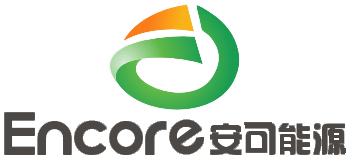- English
- Español
- Português
- русский
- Français
- 日本語
- Deutsch
- tiếng Việt
- Italiano
- Nederlands
- ภาษาไทย
- Polski
- 한국어
- Svenska
- magyar
- Malay
- বাংলা ভাষার
- Dansk
- Suomi
- हिन्दी
- Pilipino
- Türkçe
- Gaeilge
- العربية
- Indonesia
- Norsk
- تمل
- český
- ελληνικά
- український
- Javanese
- فارسی
- தமிழ்
- తెలుగు
- नेपाली
- Burmese
- български
- ລາວ
- Latine
- Қазақша
- Euskal
- Azərbaycan
- Slovenský jazyk
- Македонски
- Lietuvos
- Eesti Keel
- Română
- Slovenski
- मराठी
- Srpski језик
Lithium battery liquid injection process
2023-12-23
Lithium battery liquid injection process
Lithium battery injection refers to the operation of injecting electrolyte into a lithium battery during manufacturing or maintenance. Lithium batteries typically contain a positive electrode, negative electrode, and electrolyte, and the electrolyte is the part injected into the battery. Electrolyte is a liquid that can transfer ions between positive and negative electrodes, playing a role in conducting electricity and mediating ion transfer in lithium batteries.
1、 The functions of lithium battery liquid injection include:
1). Provide ion conductivity: Ions in the electrolyte can transfer between the positive and negative electrodes, generating current. This is the foundation for the normal operation of lithium batteries.
2). Maintaining battery performance: The quality and concentration of electrolyte can affect the performance and cycle life of the battery. The correct liquid injection operation can ensure that the quality of the electrolyte meets the requirements, thereby maintaining the performance of the battery.
3). Protecting the battery: An appropriate electrolyte can help stabilize the battery, prevent overcharging, discharging, and other issues, and protect the safety and lifespan of the battery.
1). Preparation work: Prepare the required infusion equipment, infusion liquid, and target battery.
2). Cleaning treatment: Clean the target battery to ensure that the surface is clean and dust-free.
3). Prepare the liquid for injection: According to the battery model and specifications, prepare the corresponding liquid for injection to ensure that the quality of the liquid meets the requirements.
4). Liquid injection operation: Inject the liquid into the battery, pay attention to controlling the amount of liquid injection to avoid excess or insufficient.
5). Sealing treatment: Seal the battery to ensure that the injected liquid does not leak or leak out.
6). Inspection and acceptance: Inspect and accept the battery after liquid injection to ensure that the liquid injection process meets the requirements.
3、 Notes:
1). The quality of the injected liquid must comply with national standards, and the use of inferior liquid for injection is strictly prohibited.
2).During the liquid injection process, it is necessary to ensure that operators wear protective clothing and gloves to avoid contact with the liquid injection.
3).During the liquid injection process, attention should be paid to controlling the amount of liquid injected to avoid excessive or insufficient battery performance degradation or damage.
4). The liquid injection must be operated strictly according to the specified temperature requirements to avoid affecting battery performance due to high or low temperatures.
5). After liquid injection, the battery must undergo strict inspection and acceptance to ensure that the liquid injection process meets the requirements and avoid quality problems.
4、 The optimization and development trend of lithium battery injection process include the following aspects:
1). Green environmental protection: The future development trend is towards a more environmentally friendly and sustainable direction. The research and development of liquid injection will focus more on environmental performance and reduce its impact on the environment.
2). Automation technology: With the development of intelligent manufacturing technology, the injection process will become more automated and intelligent. Automation technology can improve production efficiency, reduce human errors, and improve product quality.
3). New electrolytes: In the future, more efficient, safe, and stable new electrolytes may emerge. These new electrolytes may increase the energy density of batteries, prolong battery life, and improve safety performance.
4). Precision control technology: Precision control technology in liquid injection processes will be more widely applied, ensuring the stability and consistency of the injection process by precisely controlling parameters such as liquid flow rate and temperature.
5). Intelligent monitoring and detection technology: The future trend is to strengthen the monitoring and detection of the injection process. Through intelligent monitoring equipment and technology, various parameters during the injection process can be monitored in real time, problems can be identified in a timely manner, and adjustments and treatments can be made.
Overall, the optimization and development trend of lithium battery injection process is towards green environmental protection, automation, new electrolytes, precise control and intelligent monitoring, in order to improve production efficiency, reduce costs, improve product quality and environmental performance.



